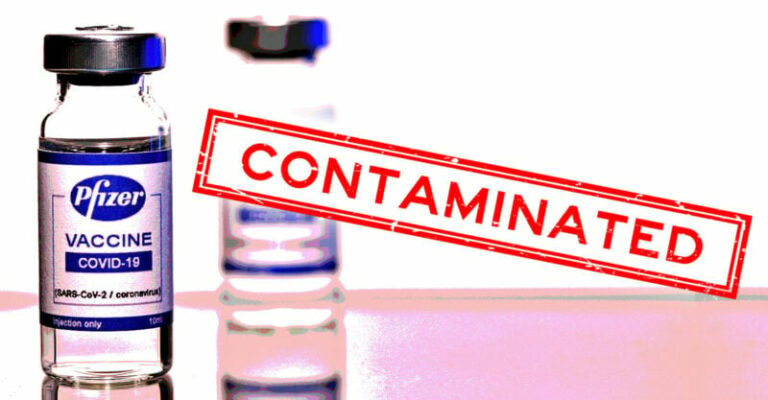‘Unambiguous’: Excess Deaths in Cyprus Tied to COVID Vaccine Rollout
Cyprus saw a substantial increase in mortality from all causes in late 2021 and early 2022 following the rollout of the COVID-19 vaccines, a peer-reviewed study in the Journal of Community Medicine and Public Health found.
Cyprus saw a “substantial, statistically significant,” increase in mortality from all causes in late 2021 and early 2022 following the rollout of the COVID-19 vaccines, TrialSite News reported last week.
Researchers from Cyprus, the University of Liverpool and Harvard University found that during the third and fourth quarters of 2021, total deaths in the island nation increased 34.1% and 11.8% respectively. During the first quarter of 2022, total deaths increased 30.7%.
Cyprus began its COVID-19 vaccine rollout in December 2020, but the peaks in monthly vaccination rates occurred in May 2021 and December 2021 and were followed by jumps in the mortality rates.
“We concluded that excess mortality occurs in unprecedented levels in Cyprus,” the researchers wrote. “Our findings raise serious concerns regarding the potential impact of the vaccination campaign and other causes on mortality.”
The authors published their findings in the Journal of Community Medicine and Public Health. Based on the association they identified, they said, “a detailed cause-specific investigation of such a significant excess number of deaths is warranted to explore the potential factors leading to this concerning and unexplained increase in population mortality.”
The researchers analyzed mortality data from 2016-2022, as reported by the Cyprus Ministry of Health to the European Statistical Office, or Eurostat. They also analyzed weekly data on COVID-19 vaccinations and related deaths collected during the pandemic by the European Center for Disease Prevention and Control.
Using that data, they determined average all-cause mortality rates and excess deaths over time, deaths reported from COVID-19 and total COVID-19 vaccines administered for Cyprus by age group.
They compared excess deaths before and during the COVID-19 pandemic and examined how those numbers related to the vaccine rollout.
Denis Rancourt, Ph.D., all-cause mortality researcher and former physics professor at the University of Ottawa in Canada who was not involved in the study, told The Defender:
“There’s clearly a temporal association here between vaccines and excess all-cause mortality. This association is robust, it’s unambiguous, it’s clear, it’s in the data itself.”
Rancourt’s team of scientists at the Canada-based Correlation Research in the Public Interest has also conducted several studies that found strong associations between vaccine rollouts and excess mortality.
He said the mortality rates and the association with the vaccine reported in the Cyprus study are similar to what his team found in their own analysis of Cyprus, which is part of a larger study not yet published.
However, to confirm what caused the deaths, Rancourt said, “You have to dig deeper as the authors correctly point out to find out what is really going on here,” Rancourt added.
Data on excess deaths in Cyprus
Epidemiologists use all-cause mortality — a measure of the total number of deaths from all causes in a given time frame for a given population — as the most reliable data for detecting and characterizing events causing death and evaluating the population-level effect of deaths from any cause.
Excess death, or excess mortality, refers to the number of deaths from all causes during a crisis above and beyond what would be expected under ‘normal’ conditions.
Excess mortality is a “more comprehensive measure” of the impact of the COVID-19 pandemic on mortality than the confirmed COVID-19 deaths because it captures deaths from other causes, like vaccines, treatment protocols or other factors that are attributable to the “overall COVID-19 crisis,” the authors wrote.
“COVID-19 death data is notoriously not reliable,” Rancourt agreed.
Research also shows that the trends identified in Cyprus are consistent with broader regional and global trends, the authors said. Across the EU, the authors wrote, excess deaths increased in 2020 and continued through 2023, albeit at variable rates.
Cyprus, they noted, was one of the EU member states with the highest excess mortality — in 2022 it had the highest excess mortality rate in Europe, reaching 26.4%.
This was consistent with findings worldwide. For example, a study found the U.S. experienced substantial excess mortality during the pandemic. And the authors’ previously published research showed a substantial increase in mortality in Cyprus in 2021 compared to 2020, even when excluding deaths reported to be caused by COVID-19.
For their current study, the authors calculated the average all-cause mortality using pre-pandemic data from 2016-2019 and assessed how mortality deviated from that level. Before 2020, they found very little excess mortality.
They presented their findings in a series of tables and graphs.

They found two peaks in vaccination across Cyprus’s population of 904,705 people. In May 2021, when the first peak happened, 42% of the population was vaccinated. In December 2021 at the second peak, 71% of the population was vaccinated. They found that after each vaccination peak, there was a higher rate of excess deaths, which was more severe after the second peak.

They also noted that excess deaths remained low during the period between the start of the COVID-19 pandemic in Cyprus and the start of the vaccination campaign, only beginning to climb substantially after the vaccine was introduced.

Overall there were approximately 3,000 excess deaths in 2021-2022.
High mortality rate in summer ‘unheard of’
Rancourt said there were a few interesting things in the data that the authors didn’t highlight. Cyprus typically has higher mortality in the winter and low in the summer, he said.
“It’s unheard of to have a high mortality in the summer. But in 2021, just after the main first wave of vaccination rollout, after a large number of vaccine doses had been given, there was a very large summer peak in excess mortality.”
Then, there was another peak in the spring and summer following the winter 2022 vaccine push.
In their study, the researchers again found that when they excluded the reported number of deaths from COVID-19, the increase in all-cause mortality persisted. This finding is also consistent with other studies, the authors reported.
The authors said their study was limited by their inability to explore what caused the documented excess mortality. They blamed a lack of access to detailed death certificates, which haven’t been made available to researchers.
“We call for official authorities to share information on diagnoses and causes of death from corresponding death certificates in order to further explore the underlying causes of these troublesome increased mortality findings,” they wrote.
They did note several issues identified in the existing literature that provide hypotheses about the causes of the rise in all-cause mortality and highlight “the concerns that the vaccination campaign may have contributed to this worldwide observed excess mortality.”
Many researchers have identified links between the toxicity of vaccine batches and adverse events, they noted. Rancourt and his team have linked the vaccine rollouts to unprecedented peaks in all-cause mortality in a study of 17 countries.
Rancourt said they are currently completing a study of 125 countries, including Cyprus, and their analysis of that country produced similar results to the current study.
The study authors also noted that during the pandemic, pressures on the healthcare system undermined access to and quality of care, increasing mortality. They also noted that lockdowns had documented serious health effects including increased mortality.
Rancourt said his work demonstrated that there may be multiple causes of all-cause mortality from different pandemic-response-related practices, including vaccination and the application of different COVID-19 treatment protocols or the psychological stress of lockdowns and isolation.
However, frail, elderly and otherwise sick people were consistently most vulnerable to death.
Suggest a correction







